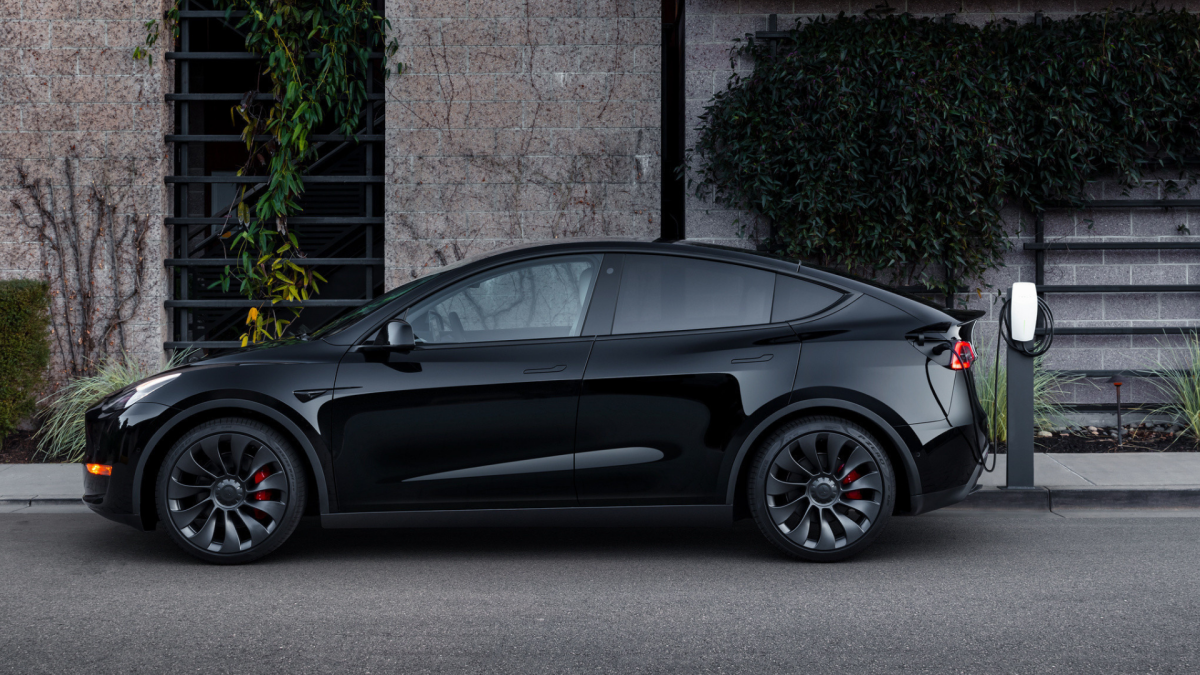In a significant development for the electric vehicle industry, independent tests have shown that several popular electric vehicles, including the Tesla Model Y and Model 3, as well as the Kia EV6, have failed to achieve their claimed driving range in real-world conditions. These results, published by the Australian Automobile Association’s (AAA) Real-World Testing Program, could significantly impact consumer confidence in the range information provided by EV manufacturers.
The AAA’s Real-World Testing Program, which for the first time focused entirely on electric vehicles, evaluated five different EV models. Unfortunately, all of these vehicles, including three popular models available in the United States (2024 Tesla Model 3, 2024 Tesla Model Y, and 2022 Kia EV6), performed below their mandatory laboratory test results in real-driving conditions. This raises important questions about the accuracy of current testing standards and what consumers should expect from their electric vehicles.
The discrepancies observed in these tests varied significantly, but even the smallest reduction in range can be concerning for EV drivers who rely on accurate range for trip planning and reducing range anxiety. These results underscore the need for greater transparency from manufacturers, as well as the importance of independent, realistic tests to provide a more accurate picture of EV performance in the real world. These findings will impact not only the EV market in Australia but also global markets.
Real-World Test Results: Model Performance
The electric vehicle range test results from the Australian Automobile Association (AAA) have revealed concerning details about the real-world performance of some of the most popular models. The Tesla Model 3 recorded one of the worst range results; in AAA tests, this model only covered 441 km (274 miles), whereas its laboratory result was 513 km (318.8 miles). This 14% reduction was one of the largest drops among the tested vehicles and could be concerning for potential buyers of this model.
The Tesla Model Y also failed to reach its laboratory range of 533 km (331.2 miles), showing a maximum range of 490 km (304.5 miles) with an eight percent reduction. The Kia EV6 also performed eight percent worse, covering 484 km (300.7 miles) in AAA tests, compared to an expected 528 km (328.1 miles). These results indicate that even vehicles with a good reputation for range may not meet expectations in real-world driving conditions.
Additionally, the AAA also tested the 2023 BYD Atto 3 and the 2024 Smart #3. The Smart #3 had the closest performance to its advertised range among all tested EVs, with a real-world range of 432 km (268.4 miles), which was only five percent less than its laboratory result of 455 km (282.7 miles). In contrast, the Atto 3, with a real-world range of 369 km (229.3 miles), showed the largest discrepancy among the five tested vehicles, performing 23 percent below its laboratory range of 480 km (298.3 miles). Although neither of these vehicles is currently available in the United States, the Atto 3 is the fifth best-selling electric car in Australia, making this discrepancy highly significant.
Energy Consumption: A Closer Look
Despite the disappointing range results, there was some good news regarding the energy consumption of some of these electric vehicles. The Tesla Model Y actually performed slightly better than its laboratory results, consuming one percent less energy; this model used 167 Wh/km instead of 169 Wh/km. This indicates that in some aspects, electric vehicles can even exceed their laboratory expectations, which is good news for current and future owners of this model.
Unfortunately, the other four vehicles did not show significant performance in terms of energy consumption. Each of these vehicles consumed more energy than their laboratory consumption figures. The Kia EV6 consumed one percent more energy than its laboratory results, the Tesla Model 3 six percent more, and the Smart #3 four percent more. These increases, while not as dramatic as the range reductions, still impact long-term operating costs for consumers.
However, the results for the BYD Atto 3 in terms of energy consumption were highly concerning. This vehicle’s energy consumption was 21 percent higher than expected, which is considered a very poor result, especially when coupled with its 23 percent range reduction. These two factors combined can severely impact the ownership experience for consumers, increasing charging costs and frequency.
These fluctuations in energy consumption results indicate that various factors play a role in the real-world performance of electric vehicles, and relying solely on laboratory data may not provide a complete picture. It is crucial for consumers to consider these differences and seek out real-world test information.

Test Methodology and Program Objectives
The Australian Automobile Association’s (AAA) Real-World Testing Program is designed to provide consumers with accurate and reliable data on actual vehicle performance. The program tested vehicles on a 93 km (57.8 miles) circuit in Geelong, Victoria, between March and May. Tests were conducted under varying weather conditions, including wet and dry weather, and at temperatures between 17 and 25 degrees Celsius (62 to 77 degrees Fahrenheit) to ensure the results were as close as possible to real-driving conditions.
The AAA emphasizes that this program uses stringent test protocols based on European regulations. These protocols ensure that results are repeatable and that the impact of human factors, such as driving style and traffic flow variations, is minimized. This scientific approach to testing enhances the credibility of AAA’s findings and makes it a reliable source for consumers.
The AAA Real-World Testing Program was proposed following the Dieselgate emissions cheating scandal in 2015 and then launched in 2023. The program aims to test 200 vehicles over four years and evaluate them against manufacturers’ claims. This initiative demonstrates AAA’s commitment to increasing transparency in the automotive industry and empowering consumers with the information they need to make informed decisions.
To date, out of 114 internal combustion engine and hybrid vehicles tested, one-fifth have exceeded toxic emission limits, and 75 percent have consumed more fuel than expected. This track record indicates that it’s not only electric vehicles that face challenges in meeting their laboratory claims; this is a broader issue in the automotive industry and underscores the importance of such testing programs.
Implications of the Findings for Consumers
The recent findings regarding the lower-than-expected real-world performance of electric vehicles have significant implications for consumers. For many, driving range is one of the most important factors in deciding to purchase an electric vehicle. If the figures announced by manufacturers are consistently not met in real conditions, it can lead to disappointment and distrust among buyers, which in turn challenges the adoption of electric vehicles.
One of the biggest concerns for EV drivers is ‘range anxiety’; the fear of running out of battery charge before reaching their destination or finding a charging station. If the real range is less than expected, this anxiety can intensify and make traveling with EVs less appealing for some individuals. This also impacts trip planning, as drivers must act with more caution and consider more charging stops.
In addition to range, energy consumption directly impacts the operating costs of electric vehicles. If an EV consumes more energy than expected, its charging costs will also be higher. This can diminish the long-term economic benefits of EV ownership and be a concern for consumers, especially when electricity prices are fluctuating.
These findings emphasize the importance of independent research and consumer awareness. Electric vehicle buyers should look for real-world test reports and user reviews in addition to laboratory figures to get a more comprehensive picture of what they can expect. This knowledge can help them make a more informed choice that aligns with their real-world needs and expectations.
Looking Ahead: The Future of EV Testing
The results published by AAA highlight the critical importance of independent and realistic tests for the electric vehicle industry. While laboratory tests ensure specific standards, they cannot always fully reflect the complexities and variables of the real world. Factors such as temperature, traffic, driving style, and road conditions can all affect an EV’s range and energy consumption.
Going forward, there is a need for greater collaboration among manufacturers, regulatory bodies, and independent testing organizations. Manufacturers can build consumer trust by providing more transparent and realistic data on range and energy consumption. Regulatory bodies can also update testing standards to better align with real-driving conditions and ensure that advertised EV ranges reflect the performance consumers will experience on the road.
Programs like the AAA Real-World Testing Program not only help consumers but also provide valuable feedback to automakers so they can improve their products. By identifying weaknesses in real-world performance, manufacturers can enhance the engineering and design of their vehicles to better meet consumer expectations and contribute to the sustainable development of the electric vehicle industry.
Ultimately, increased transparency and accuracy in reporting EV range and energy consumption are essential for the long-term growth of the electric vehicle market. The more accurate and reliable information consumers have, the more confidently they will transition to electric vehicles, which in turn contributes to global carbon emission reduction goals and the creation of more sustainable transportation.
Source: Mashable




